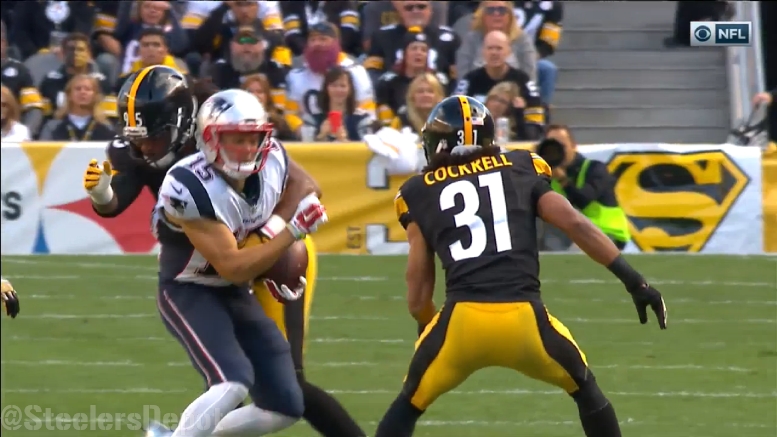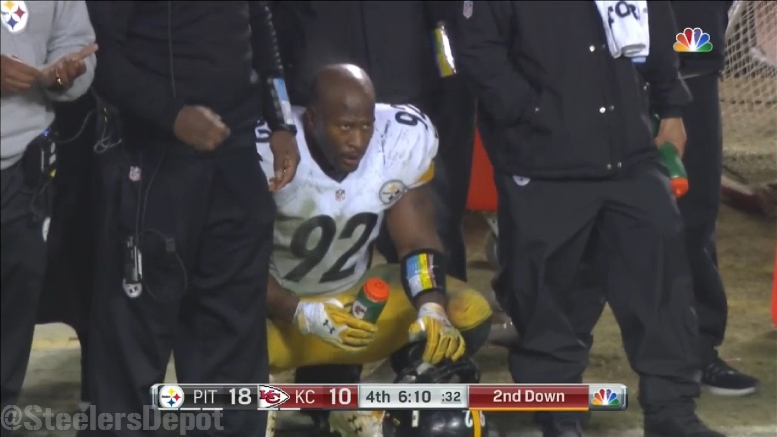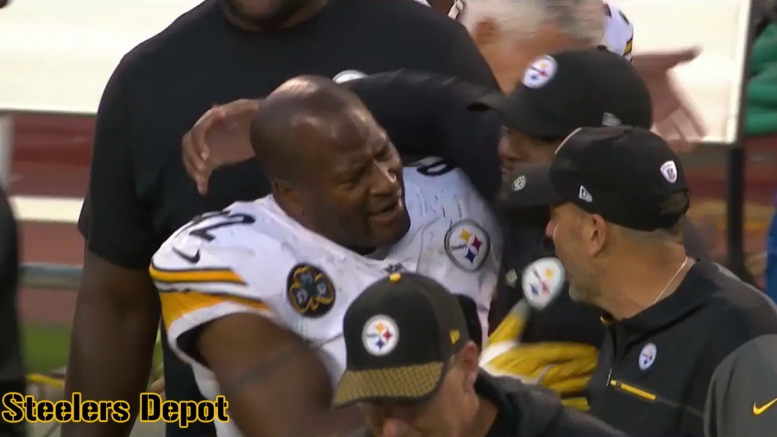There is no doubt in my mind that for the rest of his career, no matter where he ends up playing after this season, fourth-year Pittsburgh Steelers outside linebacker Jarvis Jones is going to have a target on his back when it comes to having his play scrutinized. A shortness of sacks will always get him some knocks, but absence of a sack doesn’t always mean absence of pressure.
Sunday was probably the best game of the season so far for Jones, and one of the better games of his career up to this point. In all, he registered seven tackles and a forced fumble, but he also had a handful of pressures that don’t appear on the stat sheet.
But, of course, his biggest play of the day was also the first play of the day for the defense, when he chased wide receiver Chris Hogan down from behind and knocked the ball loose as he was bringing the receiver to the ground. He also recovered the fumble that he caused, but the offense was unable to capitalize on it.
In the midst of the Patriots drive that followed, which consisted of 13 plays, 80 yards, and a touchdown, Jones did manage to make a tackle for loss on a second and short play. Lined up as an inside linebacker in the Steelers’ modified 4-3 alignment, he shot the gap left open with both the nose tackle and right end drawing double teams, and he dropped the back for a loss of a yard and a half on the play.
The outside linebacker was able to open up the second half of the game strong doing what he is supposed to be doing out on the edge, getting a couple of early pressures on the Patriot’s opening drive of the third quarter. On first and 10, aligning in a deep seven-technique, Jones set up left tackle Nate Solder wide to beat him with an inside move, swimming over the top to pressure the quarterback to try to awkwardly shovel a pass forward to his running back.
On the very next snap, he got around the edge on Solder and forced him to hold, drawing a penalty, which set up a second and 20 for the Patriots.
And then on that second and 20 play, Jones beat Solder yet again with an inside move, and in spite of the fact that he was held by not one, but two linemen, he still pressured the quarterback and forced him to scramble, getting in on that tackle as well.
In spite of his successes in this game, I did see a lot of complaints about Jones on the edge as a run defender, but the reality is that on a lot of the Patriots’ better running plays, it was James Harrison in the game. Perhaps the most notable run was an 11-yarder early in the fourth quarter, on which Jones took a step inside and let Rob Gronkowski seal him inside. But Robert Golden had the edge contain assignment on this play, and Artie Burns’ kick inside and subsequent missed tackle are the main culprits on this run.
While it’s true, as I mentioned earlier, that absence of sacks doesn’t always mean absence of pressure, the truth is that Jones typically hasn’t gotten a lot of pressures either. But he has done better this year than perhaps in any of his three previous seasons.












